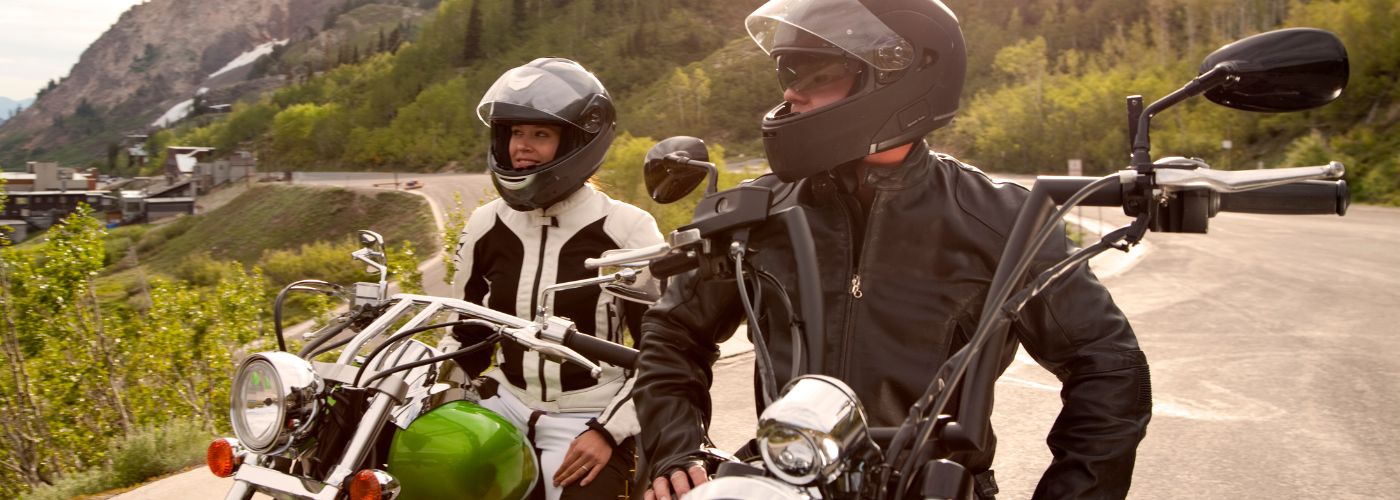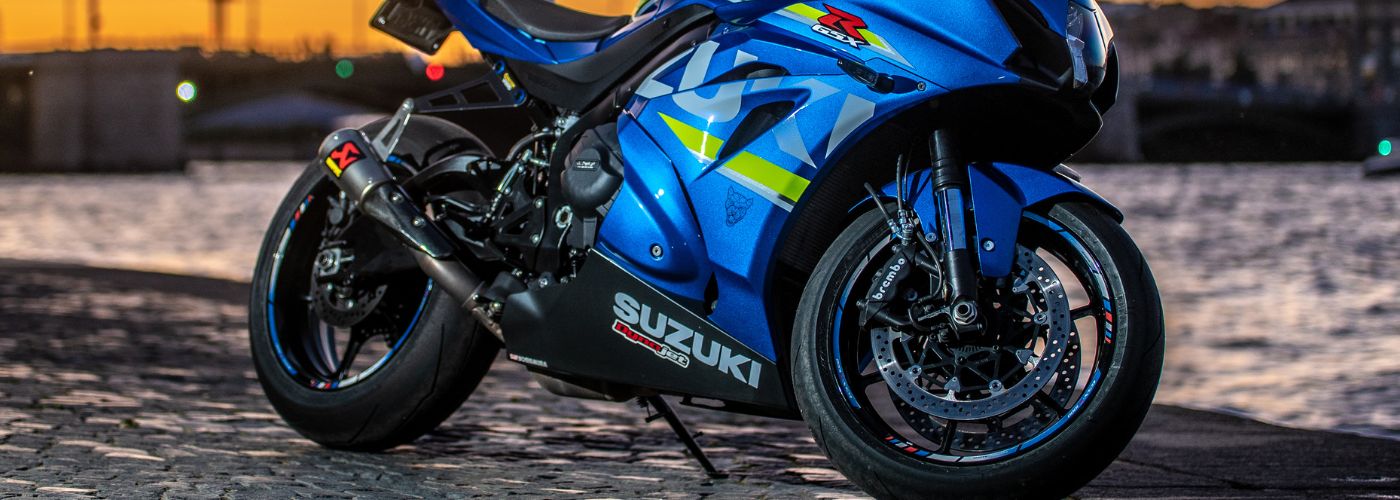If you’re an avid motorcyclist, the arrival of winter doesn’t mean you have to say goodbye to your ride. While the chilly weather and slippery roads might seem intimidating, with the right knowledge and preparations, you can still enjoy riding your motorcycle during the winter season!
Read along as we explore the essentials of winter motorcycle riding, from how to prepare your bike for the cold to safe storage practices.
Can You Ride A Motorcycle In The Winter?
Many riders wonder if it’s even possible to ride a motorcycle during the winter months. The answer is yes, you can, but it requires a different set of skills and precautions. The good news is that many motorcycle dealership service departments can help you prepare to keep your bike working at its best in cold weather, and beyond that step, here are some tips to keep in mind:
Gear Up for the Cold: The most important aspect of winter riding is staying warm. Invest in high-quality cold-weather gear, including thermal motorcycle jackets, heated gloves, and insulated riding boots. Layering is key to retaining heat while allowing moisture to escape.
Tire Choice: Consider switching to winter-specific tires designed for improved grip in cold and wet conditions. These tires have a different tread pattern and rubber compound compared to regular ones, which can make a world of difference on slippery roads.
Reduce Tire Pressure: Lowering your tire pressure slightly can provide better traction on icy surfaces. However, be cautious not to go too low as it can affect handling and safety.
Check Your Battery: Cold weather can drain your motorcycle’s battery faster. Ensure your battery is in good condition, and if it’s old or weak, consider replacing it before winter sets in.
Warming Up the Engine: Allow your motorcycle’s engine to warm up a bit longer in cold weather. This helps the oil circulate more efficiently, reducing wear and tear on the engine.
Ride Conservatively: Remember that roads may be covered with ice, snow, or salt, which can reduce traction. Slow down, increase your following distance, and use gentle inputs on the throttle and steering. Exercise extra caution when braking and make certain that you have the best type of brakes for your bike.
How To Prepare A Motorcycle For Winter
To keep your motorcycle in top shape during the winter months, proper preparation is essential. Here’s what you can do to get your bike ready for the cold:
Change the Oil: Consider switching to a winter-grade oil with lower viscosity to ensure better engine performance in cold temperatures.
Antifreeze Check: Ensure your motorcycle’s cooling system is filled with antifreeze to prevent freezing and cracking of the engine block.
Protect the Battery: If you don’t have a heated garage, disconnect the battery and store it in a warm, dry place. Consider using a battery tender to maintain its charge.
Winterize the Fuel System: Add a fuel stabilizer to your tank to prevent fuel from deteriorating over the winter. Run the engine for a few minutes to ensure the stabilizer reaches the entire fuel system.
Clean and Lubricate: Clean your motorcycle thoroughly to remove any dirt, grime, or salt. Apply a corrosion-resistant motorcycle wax or spray to protect exposed metal surfaces.
Tire Maintenance: Check your tire pressure and ensure it’s within the manufacturer’s recommendations. Adjust as needed and consider using tire covers to protect them from the cold. As with brakes, be sure to choose the best motorcycle tire for your ride.
How Often Should I Start My Motorcycle In The Winter?
One common question riders have is how often they should start their motorcycles during the winter months. While it’s a good idea to occasionally run the engine to prevent issues, you should be mindful of a few factors:
Regularly Start Your Motorcycle: Ideally, you should start your motorcycle at least once a month during the winter. This helps prevent the engine from seizing and keeps essential components lubricated.
Short Rides: When starting your bike, take it for a short ride to ensure the oil circulates properly. Avoid just idling the engine, as it may not generate enough heat to remove condensation from the exhaust system.
Battery Considerations: If you have disconnected your battery and stored it indoors, remember to reconnect it before starting your motorcycle. Ensure it’s fully charged to avoid any starting issues.
How To Store A Motorcycle For Winter
If you decide not to ride your motorcycle during the winter or plan to store it for an extended period, proper storage is crucial to maintain its condition. Here are some steps to consider:
Choose the Right Location: Store your motorcycle in a dry, cool place. A heated garage is ideal, but a shed or motorcycle cover can also offer protection from the elements.
Elevate the Tires: To prevent flat spots on your tires, consider using a motorcycle stand or blocks to elevate the tires off the ground.
Fuel Tank and Carburetor: If your motorcycle has a carburetor, drain the fuel from the system to avoid fuel deterioration and clogs. For fuel-injected bikes, use a fuel stabilizer.
Oil Change: It’s a good idea to change the oil before storing your motorcycle. Fresh oil is less likely to contain contaminants that can harm the engine during idle months.
Seal Exhaust and Air Intakes: To prevent critters from making your motorcycle their winter home, use exhaust plugs and air intake covers.
Cover It Up: Use a breathable motorcycle cover to keep dust and moisture off your bike while allowing air to circulate.
By following these winter motorcycle riding tips and proper storage practices, you can extend the life of your motorcycle and ensure a smooth transition back into the riding season when the warmer weather returns. Riding in the winter can be an exhilarating experience, but it’s essential to prioritize safety and maintenance to make it enjoyable and trouble-free. Gear up, stay warm, and keep those wheels turning throughout the winter months!




How To Choose A Side By Side
Side by sides, also known as utility task vehicles (UTVs), have revolutionized the way we explore and conquer challenging landscapes. We’ll be going over
Jul
Top Motorcycles For Long Distance Riding
Picture yourself cruising down a never-ending highway, the wind in your hair and the open road beckoning you forward. For motorcycle enthusiasts, long-distance riding
Jun
Everything To Know About Gas vs Electric Dirt Bikes
Revving engines, flying dirt, and adrenaline-fueled adventures – the world of dirt biking has always been synonymous with raw power and rugged excitement. However,
May